The best 48-, 49- and 50-inch TVs for every budget
Looking for a perfectly sized 50-inch TV? Here are your top options
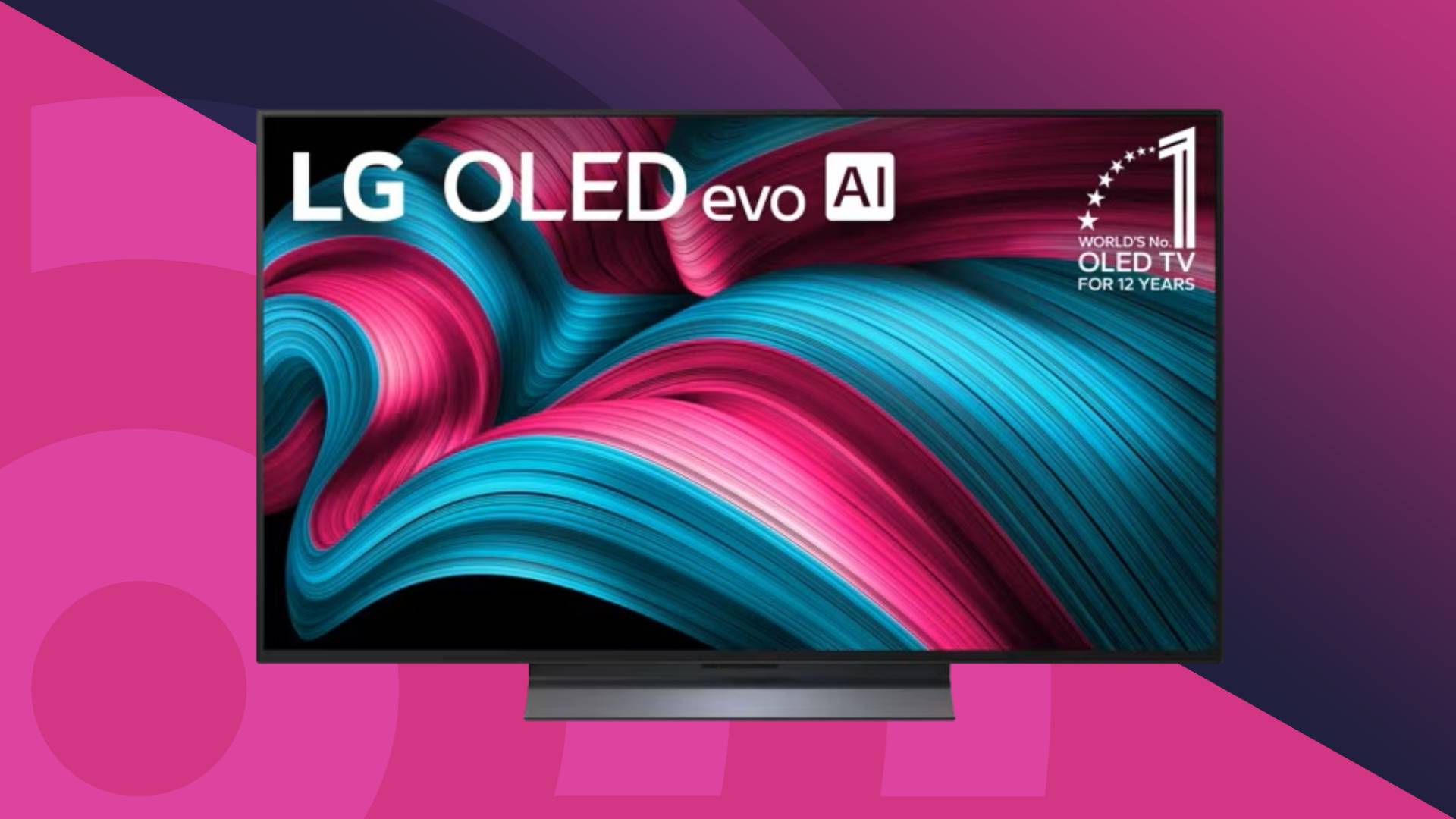
The best 48-, 49- and 50-inch TVs are the best sized TVs for the majority of people. If you don’t fancy investing in a huge screen or simply want something that won’t take up the whole room, a 48, 49, or 45-inch TV is the perfect option. At these sizes, you can still make the most of 4K resolution, luxuriate in the colourful delights of HDR – or High Dynamic Range – and appreciate the technological wizardry at work in modern screens. And even better, you’re not going to have to sell a kidney to pay for it.
The other piece of good news is that you have a wealth of choice when it comes to this size of screen. Manufacturers, thankfully, understand that we now don’t all need to fill a wall with a screen. Plus, it used to be rare that OLED TVs would drop below 55-inches but improvements in screen manufacturing processes mean you can find the best OLED TVs at the right size for you. In fact, many of the best TVs with the latest innovations in screen tech are available at this 50-inch sweet spot so there’s no need to worry about having to find the space or cash for a 65-inch OLED behemoth to have the ultimate home cinema experience.
We've got good news for gamers too. If you're playing on console or PC, you'll find that some of the TVs we've listed here are among the best gaming TVs too. That means you can get the best of both worlds: a brilliant TV and a top-tier gaming experience too. You also might notice that this guide doesn't include any of the best 8K TVs. There's a reason for that: at this screen size, 8K isn't worth having unless you plan to sit with your nose touching the display, and even then there's still a lack of dedicated 8K content to enjoy.
So with all of that in mind, let’s discover the very best 48-, 49- and 50-inch TVs. If you want something smaller for a bedroom or kitchen, we’ve also got a guide to the best 40-inch TVs. Alternatively, if you want to go up a size, check out our breakdown of the best 55-inch TVs. For something in between, check out our list below.
The Quick List
Want to cut to the chase and find out which 48-50-inch TVs are the best? Below, you’ll find a roundup of our choices. You can also jump to a detailed review of every pick and our price comparison tool to help you find the best deals.
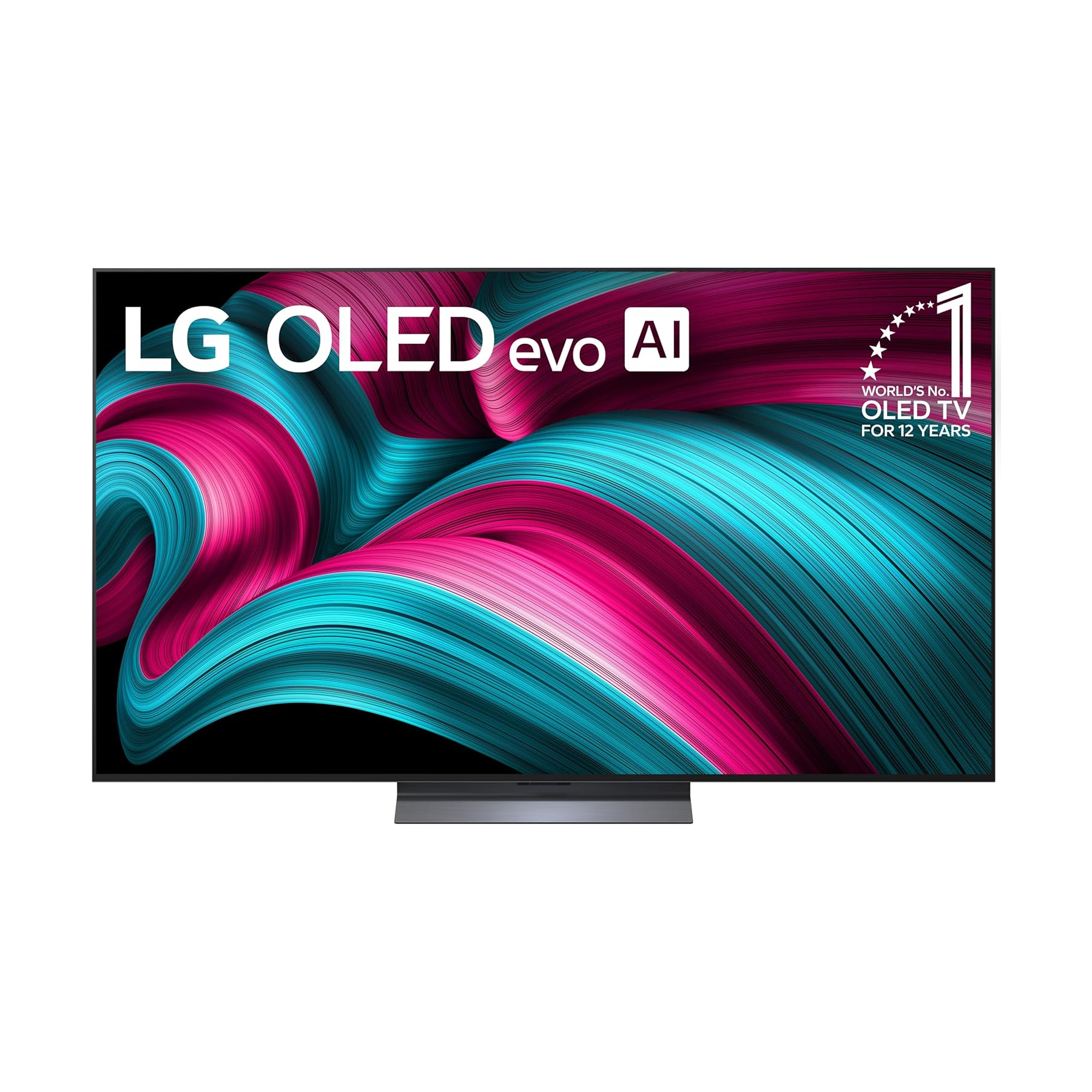
Best 48- to 50-inch TV overall
LG’s 48-inch OLED is ideal for smaller rooms and gaming setups. With excellent picture quality and an updated, user-friendly webOS interface packed with new AI features, it’s a top all-round choice.

The best cheap 50-inch 4K TV
While it’s not the best option for gaming, the otherwise feature-packed Omni QLED is a solid 50-inch TV choice for buyers on a tight budget.

The best mid-range 50-inch TV
A bright, punchy picture and excellent gaming features make this mid-range Samsung a strong choice for movie fans and gamers alike.
Load next products...

The best 50-inch mini-LED TV
This mini-LED TV uses an effective anti-glare screen and delivers spectacular performance for sports, movies and gaming.

I've been testing and reporting on TVs since 2017, but my experience writing about and reviewing screen technology stretches back to 2010. I love seeing all the latest TV releases as they come through our testing rooms, and I shape this guide by working with our reviewers and editors, to agree which TVs we think best fit different needs, or represent the best value.
October 24, 2025
Swapped the LG C4 for the new LG C5 as our 'Best 48- to 50-inch TV overall' based on our recent testing and review.
The best 48- to 50-inch TVs you can buy
Why you can trust TechRadar
Best 48- to 50-inch TV for most people







Specifications
Reasons to buy
Reasons to avoid
✅ You value exceptional picture quality: With amazing contrast, vibrant colors and life-like detail, the C5’s picture performance feels far more premium than its price tag suggests.
✅ You want a great TV for gaming: With four HDMI 2.1 ports and full support for 4K 144Hz, VRR, and Dolby Vision gaming, the C5 is an excellent choice for gamers.
❌ You want the best built-in sound: Audio performance is decent for everyday viewing, but it doesn’t quite match the C5’s stellar picture quality.
❌ You need HDR10+ support: The C5 supports Dolby Vision but not HDR10+, which is increasingly common on major streaming services.
The LG C5 builds on the success of the C4 that came before it, delivering a superb balance of picture quality, gaming performance and smart features in a sleek design. With the new Alpha 9 Gen 8 AI Processor onboard, it delivers a modest brightness boost over the C4 and enhanced AI picture and sound processing, making everything from movies to gaming sessions look and feel more dynamic.
Picture quality here is outstanding, with vivid colors, deep contrast, and refined detail that rival more expensive OLEDs. It’s also a dream for gamers, with four HDMI 2.1 ports supporting 4K 144Hz, VRR (AMD FreeSync Premium and Nvidia G-Sync), ALLM, and Dolby Vision gaming. Input lag is low, motion is smooth, and the Game Optimizer makes tweaking settings simple.
Running on LG’s latest webOS 25, the C5 adds handy AI features too, like Voice ID and personalized picture and sound modes while keeping the interface intuitive and fast. Audio is clear and will do for some people, but it does lack the power to match its stunning visuals, so we’d recommend a Dolby Atmos soundbar to pair with it. While only a modest step up from the C4, the C5 is one of the best 48–50-inch TVs you can buy today for its balance of performance, features and value.
Read our full LG C5 review
Best budget 48- to 50-inch TV

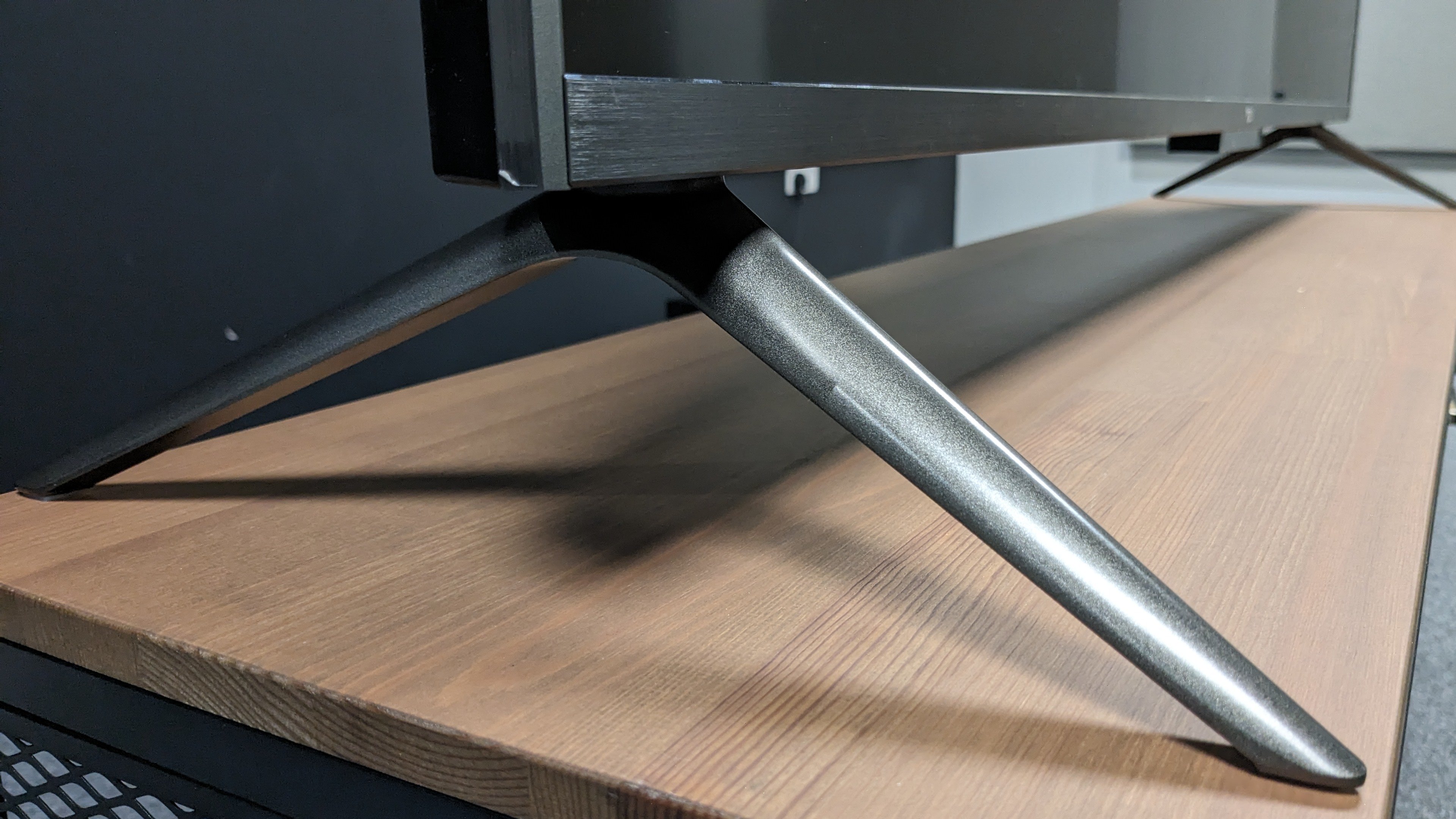
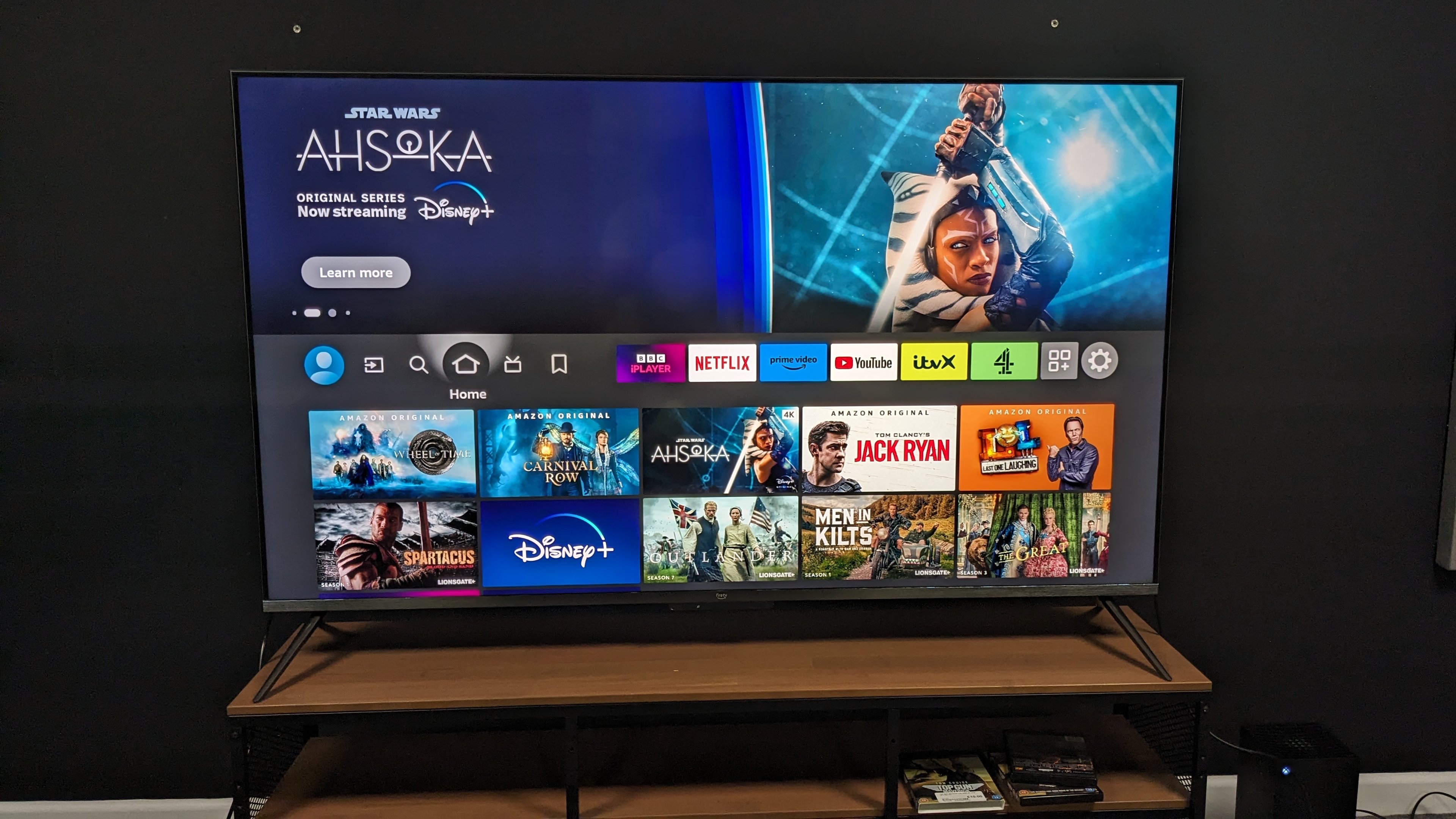


Specifications
Reasons to buy
Reasons to avoid
✅ You want to save money: The Fire TV Omni QLED is an excellent value given its picture quality and features for the money.
✅ You’re a Prime Video subscriber: Amazon’s Fire TV smart interface works hard to steer you toward Amazon Prime Video content, and it also lets you easily control Alexa devices.
❌ You want the best TV for movies: Both shadow detail and depth are lacking on the Omni QLED, making it a better choice for general TV viewers as opposed to film enthusiasts.
❌ You want the best TV for gaming: While it offers VRR, ALLM and Dolby Vision gaming and has low input lag, the Omni QLED lacks the 4K 120Hz support many gamers look for.
The Amazon Fire TV Omni QLED covers a lot of bases, with a detailed and colorful picture, good gaming performance (despite a lack of some next-gen gaming features), Amazon's Fire TV smart platform and more, all at a very competitive price. You can realistically expect to pay $349 / 399 / around AU$775 for the 50-inch model as the Omni QLED is frequently on sale.
For a budget QLED TV, the Amazon Omni QLED's picture is surprising - in a good way. Textures are detailed and skin tones are accurate and true-to-life. Colors are plenty punchy and vivid and it handles motion very well. Sadly, black levels are lacking, with dark tones taking on a gray hue rather than 'true' black, but that's to be expected from a budget QLED TV.
Despite a lack of next-gen gaming features such as a 120Hz refresh rate, the Omni QLED is a strong-performing gaming TV. It does offer VRR, ALLM and even Dolby Vision gaming - a welcome addition at this price. It also beats some much more premium models with a low 10.4ms input lag, allowing for smoother and more responsive gaming.
It does carry some limitations, such as an occasionally stuttering smart TV platform and average sound quality. Still, with the Amazon Fire TV Omni QLED you get an impressive TV at a budget-friendly price that will more than suit many people.
Read our full Amazon Fire TV Omni QLED review
Best mid-range 48- to 50-inch TV



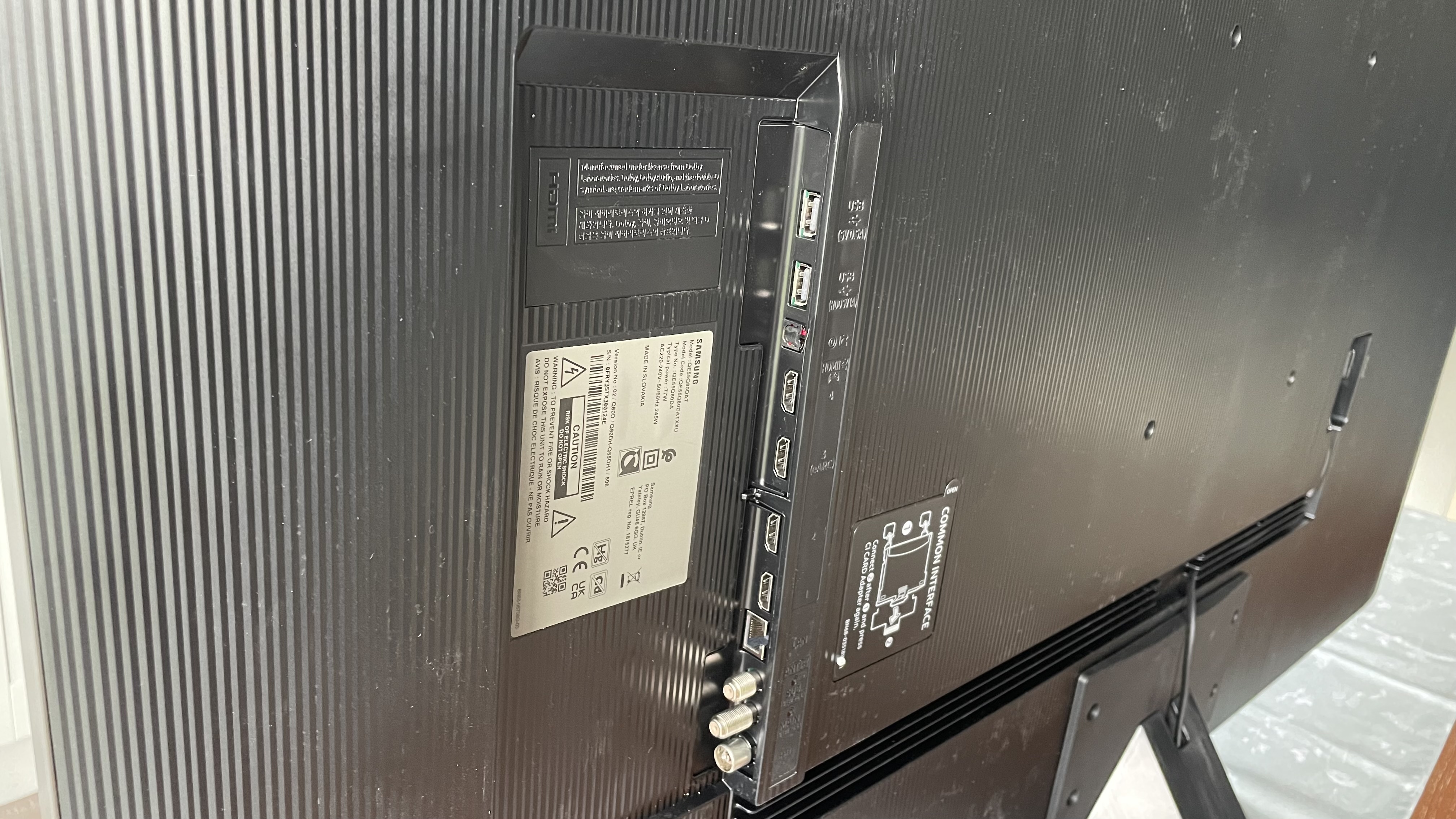

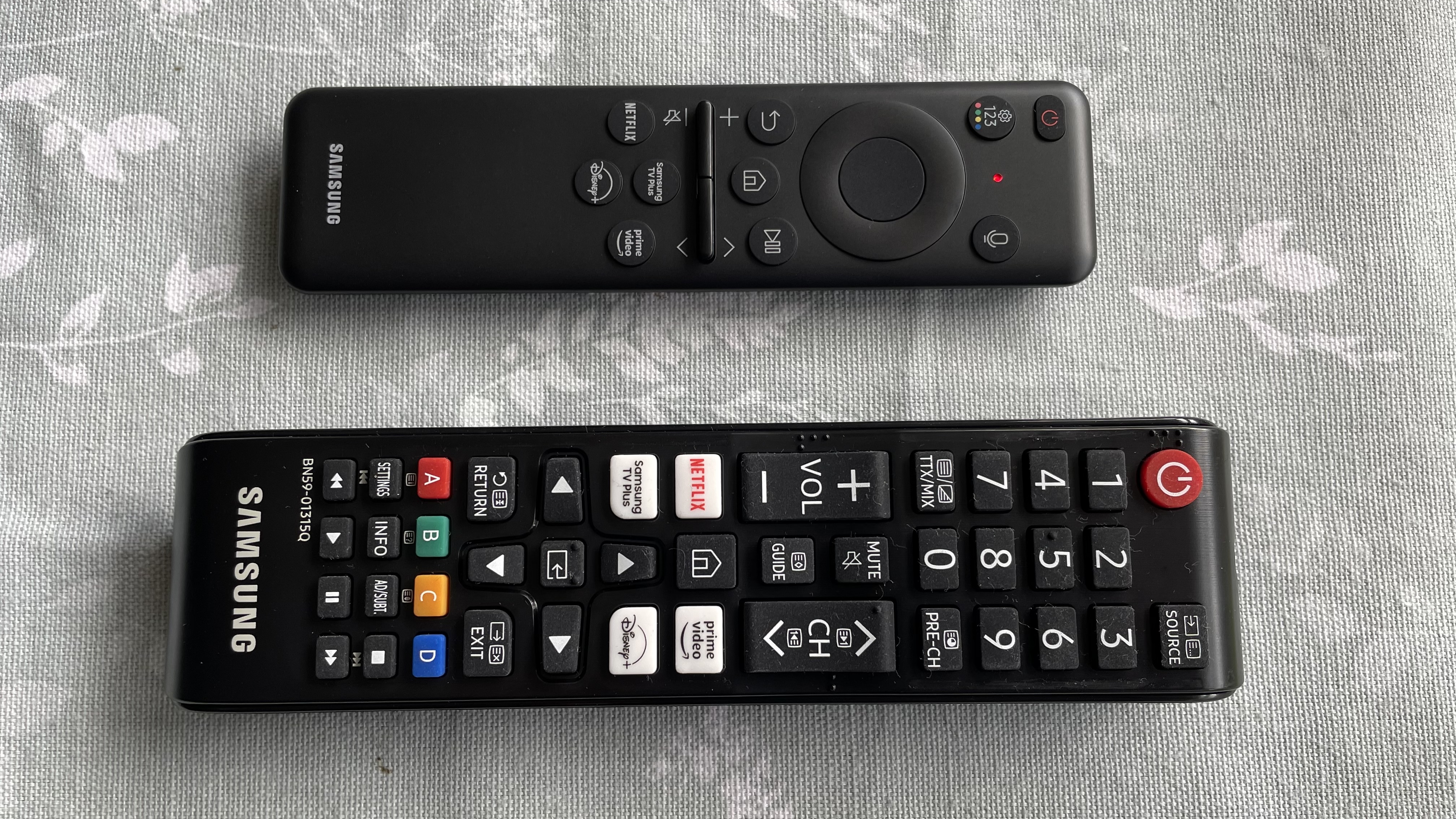
Specifications
Reasons to buy
Reasons to avoid
✅ You want a cheaper TV that’s also great for gaming: The Q80D’s comprehensive gaming features support makes it the equal of the LG C4 and Samsung QN90D (#1 and #4 on this list, respectively) when it comes to gaming.
✅ You want a TV with good built-in sound: The Q80D’s built-in speakers sound surprisingly good, making it completely possible to use the TV without a soundbar.
❌ You want the best TV for movies: The Q80D’s peak brightness and contrast are excellent for a regular QLED TV, but OLED TVs like the LG C4 (#1 on this list) and the Samsung QN90D (#4 on this list) have better overall picture quality.
❌ You want Dolby Vision HDR support: Like all Samsung TVs, the Q80D supports the HDR10 and HDR10+ high dynamic formats, but not Dolby Vision.
Samsung's new Q80D features improved brightness and contrast over last year's Q80C (which it replaces in this guide). We we also impressed with its fantastic peak brightness for a regular LED TV, which is why its 50-inch sized version is our top mid-range pick.
The Samsung Q80D boasts the same powerful Neo Quantum 4 Gen 2 processor used in Samsung's flagship mini-LED TVs, along with the same great suite of gaming features. These include super-fast response time and bold, sharp images.
In our Samsung Q80D review, we wrote that this TV boasts: "an outstanding contrast performance, combining more brightness with deeper, more natural, and more consistent black levels than any other LCD TV I can think of in its class." It's an ideal display if you want premium picture quality at a lower price. You'll get contrast, color and sharpness as good and consistent as you can find in the mid-range TV space. As an added bonus, the audio here is good enough that you won't need to rush out to buy a soundbar.
There are a wide range of connections on offer from this Samsung TV, including four HDMI ports. One is equipped with eARC functionality, which passed lossless Dolby Atmos audio tracks to soundbars and AVRs. There are also two USB ports, an Ethernet port, an RF port, a digital optical audio output, and Bluetooth and Wi-Fi support.
Don't expect the kind of ultra-modern and thin design of Samsung's high-end TVs here. But the Samsung Q80D still boasts a nice-looking silver metallic finish with a screen frame that has bold edges and an impressive built quality – especially considering the price. All in all, the Samsung Q80D proves there’s great quality to be had in the more affordable half of the brand’s TV range.
Read our full Samsung Q80D review
Best 48-50 inch mini-LED TV





Specifications
Reasons to buy
Reasons to avoid
✅ You want a TV to watch in bright rooms: With an effective anti-glare screen and high brightness, the QN90F is perfect for viewing in bright rooms.
✅ You want a great TV for gaming: With 4K 165Hz, ALLM, and VRR (AMD FreeSync Premium Pro) support across its four HDMI 2.1 ports and ultra-low input lag, the QN90F is a full-featured gaming TV.
❌ You want to save money: The QN90F is a superb performer, but that comes at a price. It's easily one of the most costly TVs in this guide.
❌ You want Dolby Vision HDR support: Like all Samsung TVs, the QN90F supports the HDR10 and HDR10+ high dynamic formats, but not Dolby Vision.
The Samsung QN90F is brilliant TV, delivering excellent picture quality for movies and responsive performance for sports and gaming. And with its anti-glare screen, it's a great option for those watching in a bright room.
In our testing, we were impressed by the QN90F's effective local dimming, vibrant color display and strong contrast. but its anti-glare screen is what wowed us the most. As we noted in our review, "even with overhead lights turned on, the TV's screen was free of reflections". It also handles motion well and has a wide viewing angle. Our final assessment in our review? The QN90F is "the mini-LED TV to beat in 2025".
The QN90F is an accomplished gaming TV, with a full list of features supported across four HDMI 2.1 ports, including 4K 165Hz, VRR (AMD FreeSync Premium Pro), ALLM, and HDR10+ gaming. It also has an ultra-low 9.5ms input lag time for fast, responsive gaming performance, as well as a ton of cloud gaming options available via its Samsung Gaming Hub.
The QN90F even delivers in the sound department, with an accurate presentation and plenty of clarity and power. It may be an expensive TV, but given what it delivers, the QN90F is worth the investment. It's no surprise we awarded it 5-out-of-5-stars in our review.
Read our full Samsung QN90F review
How to choose the best 48- to 50-inch TVs
What is the best 50-inch smart TV?
Currently, the best 48-50 inch TV available is the LG C4. We've seen it available for as low as $999/£899 and it gives you everything you could need in a TV for movies, gaming and smart features plus has the added benefit of a crisp, dynamic OLED panel.
How much should you pay for a 50-inch TV?
It all depends. If you want the TVs with the most amount of features, expect to pay close to $800 / £700 / AU$1,000. That said, you can easily find 50-inch TVs at half that price if you don't mind skimping out on performance. If you consider yourself a cinephile and love to watch movies at their best, it's better to spend a bit more for a more premium model.
What should you look for in a 50-inch TV?
Like shopping for any other TV, there are a few important specs to pay attention to: resolution, contrast, native refresh rate and HDR support all matter here. Ideally, you're looking for a 4K 120Hz TV with a peak brightness of around 1,000 nits and support for Dolby Vision and/or HDR10+. That's hard to find outside of our top pick – but that's what you're looking for in an ideal world.
For gamers, you definitely want to find HDMI 2.1 ports like the ones you'll find in our second pick while sports watchers should pay extra attention to a TV's motion handling. The latter is tough to suss out through specs, but definitely something you can spot in-person if you go to the store.
What makes shopping for 50-inch TVs tricky is that manufacturers typically don't make their flagship TVs in that size. That means you're basically stuck shopping between all the B-list TVs and lower.
If you can stretch your budget – and wall – a bit further, we'd really implore you to consider a 55-inch TV instead. There's a much wider selection of models available and many of them are the brand's flagship TVs. If, however, a 50-inch is all you fit, then hopefully you've found at least a few options above.
What 48, 49 and 50-inch TVs are coming in 2025?
The 2025 TV market is in full swing as nearly every brand has released their TV ranges for the year (a big chunk of which may appear on this list), including LG, Samsung, Hisense, TCL, Sony and Panasonic.
TVs from LG, Samsung, TCL (in the UK) will either make their way onto this list later in the year when their predecessors go out of stock, such as the LG B5and LG C5. The newest addition to our list is the Samsung QN90F, which replaced its predecessor, the QN90D, as the best mini-LED TV.
We hope to test Samsung's more entry-level QLED TVs later this year, such as the Samsung Q8F and Samsung Q7F, to see if they can slot in at the best budget or mid-range categories on this list.
In the UK, we'll be looking to test Philips' OLED TVs such as the OLED760 and OLED910, though we were surprised to discover the OLED810 won't be available in a 48-inch size like its predecessors. Ambilight is Philips' most unique feature and always adds an extra layer to its performance.
Other 48-, 49- and 50-inch TVs we've tested
Below is a list of other 48-, 49- and 50-inch TVs we've tested that haven't made the list (yet, in some cases).
LG C5: Successor to the best 48-50-inch TV, the LG C4, the LG C5 is a brilliant TV that covers all the bases. It earned five out of five stars in our LG C5 review thanks to its spectacular picture, full suite of gaming features and excellent smart TV platform. However, it isn't that different from the C4, so the latter maintains its place on this list, at least for now.
Samsung Q60D: A solid, entry-level QLED TV with an appealing design and good overall picture and smart TV platform, the Q60D earned four out of five stars in our Samsung Q60D review. While great for the price, it doesn't beat the feature-packed Amazon Fire TV Omni QLED on this list as the best budget option.
LG B5: The LG B5 is the entry-level OLED for LG's 2025 TV lineup and is the successor to the LG B4, our top pick for best budget OLED in 2024. It delivers a full suite of smart and gaming features with excellent picture quality and a solid, sleek design. It doesn't fit on our list right now as it's too pricey for a mid-range TV, and while the LG C4 is still around, the C4 is the better deal. Expect to see it on our list in the future, however.
Samsung S90F: Samsung's 2025 mid-range OLED TV and rival to the LG C5, the S90F is a feature-packed TV that is great for gaming. We've only reviewed the 65-inch model with a QD-OLED panel, so we can't fully comment on the 48-inch S90F, which uses a W-OLED panel. On paper, however, it carries a lot of similar specs to the C5.
How we tested the best 48-, 49- and 50-inch TVs
Our testing regimen for TVs in the 50-inch and under size range follows the same process used for TVs with larger screen sizes. We carefully evaluate picture quality, sound quality, and gaming performance, and consider these factors in the context of the TV’s price to help determine overall value.
Our process relies on both subjective evaluation and objective testing using specialized equipment. The subjective part involves an initial period of casual viewing using standard-definition, high-definition and 4K HDR sources – both streaming and physical media – to determine the most accurate picture presets and to get a rough sense of a TV’s overall performance. We’ll note its upscaling of standard- and high-def sources at this time, since most content is still viewed in those formats, even on 4K TVs.
The next subjective step involves viewing special video test patterns and reference movie and TV clips to evaluate contrast and shadow detail, overall picture detail, color accuracy, and motion handling. We’ll also check factors like black uniformity and off-axis picture uniformity during this phase, along with local dimming performance if the TV uses an LED or mini-LED backlight.
Our objective tests use a colorimeter that measures specialized video test patterns, with the results recorded by Portrait Displays’ Calman calibration software. This allows us to gauge a TV’s peak brightness – important for picture contrast and rendering highlights in programs with high dynamic range. We also measure its fullscreen brightness, which is important for programs like sports and for daytime viewing, where screen reflectivity – another performance factor we evaluate – also comes into play.
Other objective tests measure color accuracy for the TV’s Filmmaker Mode (or an equivalent picture mode such as Theater or Movie), which typically provides the most accurate color reproduction. We will also measure the TV’s coverage of the UHDA-P3 color gamut – the same one used for mastering movies for 4K Blu-ray disc and 4K streaming – along with the more advanced BT.2020 color gamut.
For gaming performance, our objective tests involve measuring the TV’s input lag in milliseconds using a Leo Bodnar 4K input lag meter with the TV set to its Game picture mode. Results under 15ms on this test are generally considered to be ideal for gaming.
We aim to keep our tests and conditions consistent. Some of our reviewers do use different testing equipment, though we follow a similar testing process to achieve the same level of accuracy.
Latest updates
October 24, 2025
Swapped the LG C4 for the new LG C5 as our 'Best 48- to 50-inch TV overall' based on our recent testing and review.
August 8, 2025
Added benchmark testing results for each entry in the list. Updated New TVs coming in 2025 with TVs we hope to test in future. Updated Other 50-inch TVs to consider section.
June 9, 2025
Replaced the Samsung QN90D with the Samsung QN90F due to the latter's effective anti-glare screen and overall impressive performance.
Read more updates
April 4, 2025
Added a 'New TVs for 2025' section with the latest models set for release in 2025 that could be added to this list. Added a 'Other TVs we've tested' with other 48-, 49- and 50-inch models we've tested.
February 5, 2025
Added Quick List for navigation, photo galleries for each listing, and 'How we tested' section.
December 6, 2024
Added 'Buy it if' and "Don't buy it if" boxes for each entry to provide succinct buying advice.
October 10, 2024
Replaced the Samsung QN90C with the Samsung QN90D due to its higher brightness levels.
August 9, 2024
Replaced the Samsung Q80C with the Samsung Q80D due to its improved brightness and contrast levels.
June 11, 2024
Replaced the LG C3 with the LG C4 as 'best TV for most people' due to the C4's improved brightness, processing and gaming features.
March 28, 2024
Changed the LG C3 to the 'best overall'. Introduced the Amazon Omni QLED as 'best budget' and Samsung Q80C as 'best mid-range'. Samsung QN90C became 'best mini-LED'. Removed Philips OLED807, LG A2 and Samsung BU8500 due to stock levels. Added in this latest updates section.
Sign up for breaking news, reviews, opinion, top tech deals, and more.

Matt is TechRadar's Managing Editor for Entertainment, meaning he's in charge of persuading our team of writers and reviewers to watch the latest TV shows and movies on gorgeous TVs and listen to fantastic speakers and headphones. It's a tough task, as you can imagine. Matt has over a decade of experience in tech publishing, and previously ran the TV & audio coverage for our colleagues at T3.com, and before that he edited T3 magazine. During his career, he's also contributed to places as varied as Creative Bloq, PC Gamer, PetsRadar, MacLife, and Edge. TV and movie nerdism is his speciality, and he goes to the cinema three times a week. He's always happy to explain the virtues of Dolby Vision over a drink, but he might need to use props, like he's explaining the offside rule.